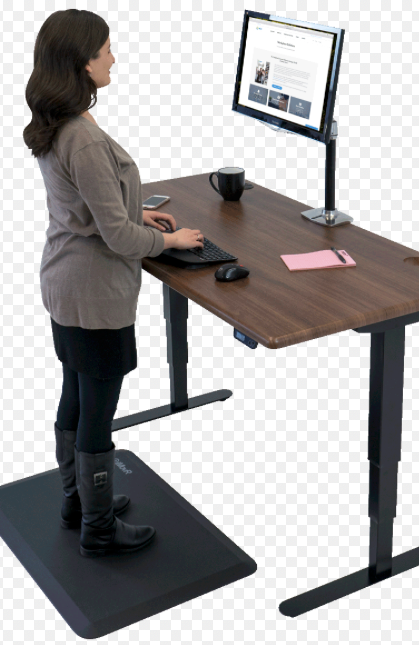Unfortunately, many of us sit to work. This puts a big strain on our muscles, tendons, ligaments and bones, since humans were not designed to sit still for hours at a time (ask any elementary school child.) If you are held in one place at work (sorry) do as much as you can to move around, stretch and change positions during those 8’ish hours. There’s a small difference in energy burned from sitting to standing (a 155# person sitting burns 45 cal/hr, standing: 47 cal/hr, this link provides energy required for various activities) , so I think the biggest benefit of standing desks is the fact that they allow you to move and stretch, change positions easily, and not get all accordioned-up in the hip flexors. If you are standing on a concrete floor, a fatigue mat will help. But standing out of alignment for a long time will be just as uncomfortable and damaging as sitting all day, so be sure that your screen and keyboard are placed so that the neck, shoulders, elbows and wrists are neutral and aligned. Best approach: remember elementary school? You were right: fidget. Move around A LOT. Balance. Stand on one foot. Stretch. Don’t get stuck in one position for longer than an hour, and alternate between sitting and standing. Use an alarm on your computer. Drink a lot of water and walk to the restroom for mental and body breaks. Keep the blood moving, not pooling in your lower extremities. And don’t work through your breaks. Take them and use them healthfully. The old adage is true: simply move it or lose it.

